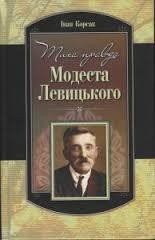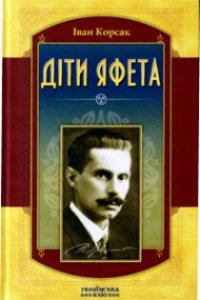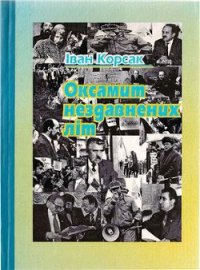Імена твої, Україно - Корсак Иван Феодосеевич "Korsak" (книги читать бесплатно без регистрации TXT) 📗
292292
«fables» in the Japanese language and to sell them to various journals. These stories had
a certain quality which really appealed to Japanese readers. I’m not sure exactly what it
was, but they certainly also had a lyrical quality to them and that resulted in Eroshenko
being known as the «Blind Poet». In fact, with one exception, Eroshenko does not seem to
have written any poems in any language during his time in Japan. The only poem which
is known is «Antaudiro de la Ciganino» (The Gypsy’s Prophecy), which he recited at
the Japanese Esperanto Conference in 1920. On that occasion, his dramatist friend Akita
Uzyaku translated the poem into Japanese and read out that version to the audience.
But it was as a writer of prose that Eroshenko became known as in Japan and in 1920
his portrait was painted by a short-lived but well-known painter of the modern school,
Nakamura Tune (1888–1924). And as we will see, later his stories also had a strong appeal
to the Chinese temperament».
David Poulson
[113] «Російська революція, що почалась 4 жовтня 1917 року, мала серйозні
наслідки для Василя Єрошенка, як і для будь-кого, хто був за національністю
росіянином. Єрошенко вже не міг отримувати постійний прибуток, який під час
подорожі йому надавали батьки. До того ж британський уряд, який із великою
підозрою ставився до будь-якого росіянина, вигнав його із Калькутти. Не мало
значення те, що Єрошенко був не причетним до політики та індивідуумом, якого
можна знайти будь-де: той факт, що він був росіянином, надавав повні підстави для
вигнання і разом з тим він був змушений покинути Індію. Єрошенко повернувся до
Японії та приїхав до Токіо в липні 1919 року.
За іронією долі, після повернення до Японії його почали асоціювати із рухом
соціалістів. Він познайомився та здружився із Такату Сейдо (1893–1974), який згодом
допоміг заснувати Комуністичну партію Японії. Такату познайомив Єрошенка з іншими
молодими японськими соціалістами, одна з яких, Камітіка Ітіко (1888–1980) ду же
допомогла молодому росіянинові. Ітіко була журналісткою, яка пізніше стала впливовим
членом Японської Соціалістичної партії, і, хоча про це в той час ніхто не знав, вона
заклала підґрунтя пізнішої дружби Єрошенка та китайського письменника Лу Сіна.
Єрошенко міг заробляти викладанням есперанто та працюючи масажистом,
однак йому потрібно було більше грошей. (Він, на мій подив, здавалося, не заробляв
на власних музичних талантах). Отож, з допомогою Камітіки Ітіко (а також інших
японських друзів) Єрошенко почав писати японською мовою історії, які називав
«байками», та продавати їх у різні журнали. Цим історіям була притаманна певна
якість, яка дуже подобалася японським читачам. Я не впевнений, що саме це було,
але вони мали певні ліричні якості, в результаті чого Єрошенка знали як «сліпого
поета». Насправді, за одним винятком, під час перебування в Японії Єрошенко,
здавалося б, не написав жодного вірша жодною мовою. Єдиний вірш відомий
під назвою «Antaudiro de la Ciganino» («Пророцтво циган»), який він декламував
на Конференції есперанто в Японії 1920 року. З такої нагоди його друг-драматург
переклав поему на японську мову та прочитав цю версію перед аудиторією.
Але в Японії Єрошенко прославився саме як прозаїк, а 1920 року його портрет
написав добре відомий художник Накамура Тюн (1888–1924). І, як ми побачимо,
пізніше його історії також мали сильне посилання на китайський темперамент».
Девід Поулсон
293
[114] http://bahai-library.com/east-asia/divine.flag/chapter3.html
«Eroshenko was a Russian Esperantist associated with the School for the Blind. He
knew Mr. Torii, who was a student at the school, and introduced him to Miss Alexander. She
taught the Faith to both of these friends. Eroshenko did not commit himself to becoming
a Baha’i…
In 1915 Mr. Eroshenko translated the Arabic portion of The Hidden Words
(Kakusaretaru Kotoba) into Esperanto and it was printed about 1916. Miss
Alexander read the book to him and he first took it down in English Braille».
Unfurling the Divine Flag in Tokyo: An Early Baha’i History by Barbara R. Sims,
Baha’i Publishing Trust of Japan, 1998.
[114] Єрошенко був російським есперантом, якого асоціювали зі Школою для
сліпих. Він знав містера Торіі, який навчався у Школі та познайомив його із міс
Александер. Вона викладала Віру обом цим друзям. Єрошенко не став Бахаі…
1915 року Єрошенко переклав арабську частину «Прихованих слів» (Какусаретару
Котоба) на мову есперанто, і цей переклад було надруковано десь 1916 року.
Сімс Барбара Р. Розгортання божественного прапора в Токіо: рання історія
Бахаі. – Бахаі: Паблішінг Траст Японії, 1998.
[115] http: //bekkoame.ne.jp/~gensei/ten/ebosu.html
«Blind Russian poet Vasil Eroshenko was born in Russia in 1890. He had been a
healthy and cheerful boy, but lost sight suffering from serious illness at the age of 4. The
dark world had changed his character drastically…
He entered a school for the blinds in Moscow, but completely isolated world under
the strict surveillance injured seriously the sensitive boy, and planted rebellious spirit in
him before long.
In 1909, Eroshenko who returned home, got a job in the orchestra consisting of blind
people and learned the Esperanto which was an artificial international language.
In 1912, while traveling he heard the rumor that Japan was very generous to blinds,
and decided to go to Japan.
After learning Japanese and exchanging letters in Esperanto in Russia, he finally
landed on his longing land of Japan.
In those days, Soma Kokko held a society for the study of Russian Literature at regular
interval.
She met Eroshenko through the introduction of Katayama Shin, a professor of Waseda
Univiesity. She decided to look after him and Eroshenko was so attached to her as to call
her a mother. Eroshenko became a model of painting of Turura Goro or Nakamura Tune.
At the reading circle of scenario, his script was read and the way of cultural exchange
opened before him by the care of Soma Kokko.
On the other hand, he had gradually devoted himself to socialism, and was suspected
of being the member of Bolshevik.
Policemen surrounded the Nakamuraya Bakery, broke into the room of Kokko to
find Eroshenko and forced to take him to a police station.
294294
At this time, the couple of Soma accused of the policemen and forced the head of the
police station to resign the post.
In spite of such a protection, Eroshenko was exiled at the third time of his arresting
in 1921.
Later, Eroshenko was invited by Lu Xun and went to Beijing. He taught at Beijing
University and was engaged in writing a drama.




